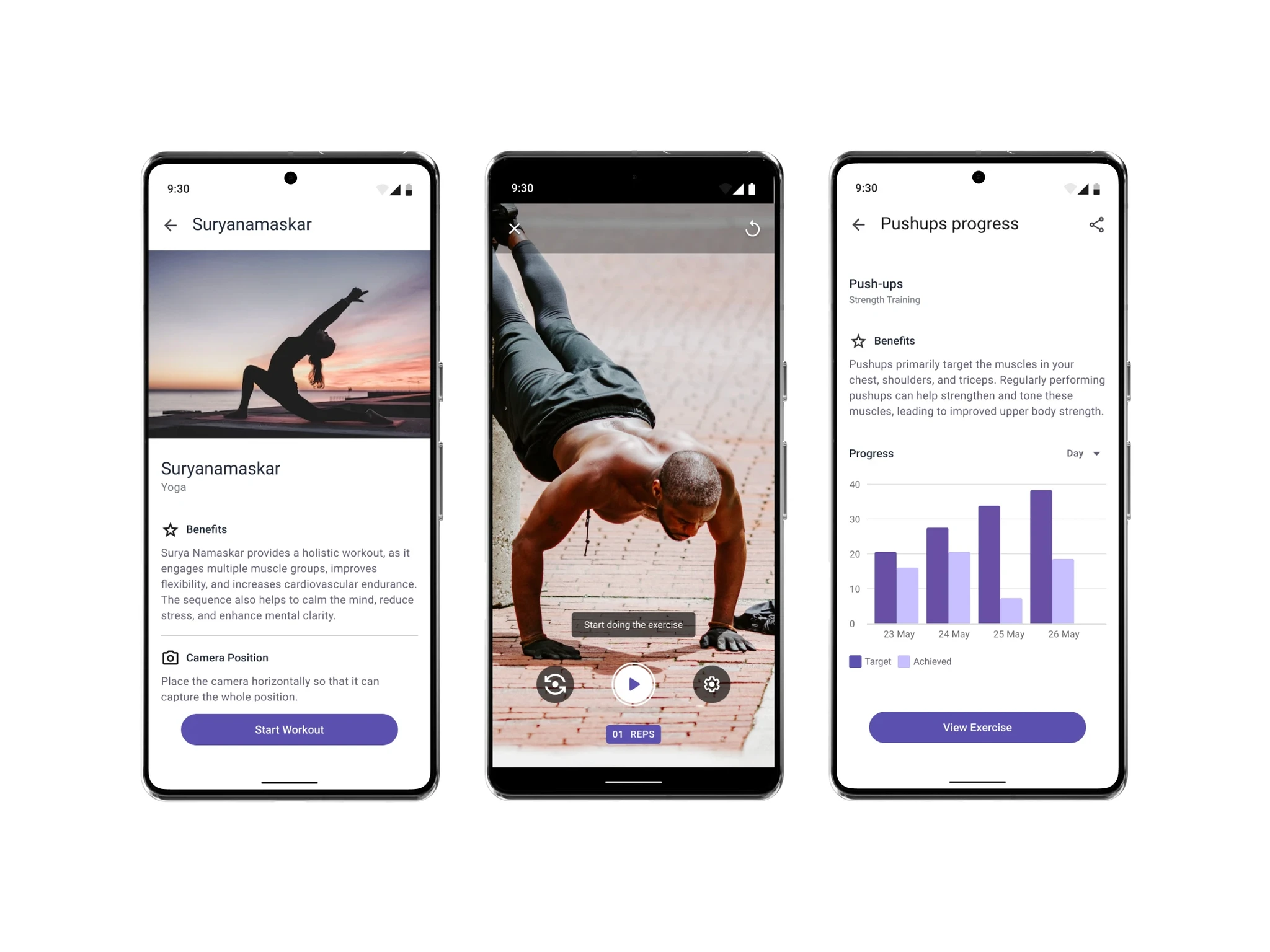Fitnex
The FitneX App is a fitness companion designed to enhance your exercise routine with the following features:
Real-time Pose Detection: Utilizes ML KIT technology for instant feedback on exercise form.
Exercise Recognition: Identifies exercises like push-ups, lunges, and squats through Pose Detection.
Types of Exercises: Offers both repetitive (e.g., push-ups) and holding exercises (e.g., Tree Pose).
Repetition Counting: Automatically counts repetitions and analyzes form.
The target users of the FitneX App are individuals looking to enhance their fitness routine with technology. Here are the key user groups:
Fitness Enthusiasts: People who are passionate about staying fit and require real-time feedback on their exercise form.
Exercise Beginners: Individuals new to exercising who need guidance and automatic detection of their exercises.
Goal-Oriented Users: Those who want to track their progress through detailed analysis and graphical representations of their achievements.
We identified that the current version of the app suffered from a lack of visual and experiential consistency.
We made a strategic decision to align with the design principles articulated in Material Design, which serve as the official guidelines for the Android platform. This approach enabled us to standardize the app's appearance and behavior, fostering a more cohesive user experience.
Embracing a design system facilitated a more cohesive and efficient collaboration between design and development teams. By leveraging the pre-existing components tailored for the Android platform, our developers were able to reduce redundancies and more effectively implement the requisite design elements. Furthermore, operating with a single source of truth ensured that both design and development team worked from the same foundational design elements, reducing the likelihood of inconsistencies and errors during implementation. Overall, this approach streamlined our development efforts and resulted in a more polished and unified app experience for our users.
Visual Consistency: The application now has a unified look and feel, adhering to Material Design principles.
Enhanced User Experience: Users enjoy a more seamless and intuitive interaction with the app.
Efficient Collaboration: Design and development teams worked more cohesively, leveraging a shared design system.
Streamlined Development: Adoption of standardized components reduced redundancies and accelerated the development process.


